lncRNA MALAT1 binds chromatin remodeling subunit BRG1 to epigenetically promote inflammation-related hepatocellular carcinoma progression
- PMID: 30546959
- PMCID: PMC6287787
- DOI: 10.1080/2162402X.2018.1518628
lncRNA MALAT1 binds chromatin remodeling subunit BRG1 to epigenetically promote inflammation-related hepatocellular carcinoma progression
Abstract
Hepatocellular carcinoma (HCC) is one type of cancers whose carcinogenesis and progression are closely related to chronic inflammation. Identifying the molecular mechanisms for inflammation-related HCC progression will contribute to improve the efficacy of current therapeutics for HCC patients. Many kinds of epigenetic factors, including long non-coding RNAs (lncRNAs), have been discovered to be important in HCC growth and metastasis. However, how the lncRNAs promote HCC progression and what's the application of lncRNA silencing in vivo in suppressing HCC remain to be further investigated. Here, we found that lncRNA metastasis associated lung adenocarcinoma transcript1 (MALAT1) was upregulated in HCC tumor tissues, and knockdown of MALAT1 suppressed proliferation, cell cycle and invasion of HCC cells in response to lipopolysaccharide (LPS) stimulation. Knockdown of MALAT1 significantly inhibited LPS-induced pro-inflammatory mediators IL-6 and CXCL8 expression in HCC cells, which could be restored by overexpressing MALAT1. Mechanistically, MALAT1 recruited Brahma-related gene 1 (BRG1), a catalytic subunit of chromatin remodeling complex switching/sucrose non-fermentable (SWI/SNF), to the promoter region of IL-6 and CXCL8, and thus facilitated NF-κB to induce the expression of these inflammatory factors. Importantly, in vivo silencing of MALAT1 in HCC tissues inhibited growth of HCC xenografts, and also suppressed the expression of pro-inflammatory factors in HCC tissues accordingly. Our results demonstrate that MALAT1 promotes HCC progression by binding BRG1 to epigenetically enhance inflammatory response in HCC tissues, and silencing of MALAT1 may be a potential approach to the treatment of HCC.
Keywords: BRG1; MALAT1; chromatin remodeling; hepatocellular carcinoma; inflammation and cancer; lncRNA.
Figures
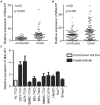
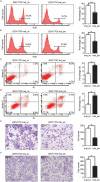
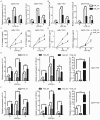


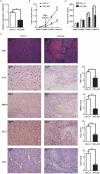
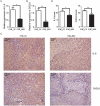
Similar articles
-
LncRNA MALAT1 acts as a miR-125a-3p sponge to regulate FOXM1 expression and promote hepatocellular carcinoma progression.J Cancer. 2019 Oct 22;10(26):6649-6659. doi: 10.7150/jca.29213. eCollection 2019. J Cancer. 2019. PMID: 31777593 Free PMC article.
-
miR-124-3p availability is antagonized by LncRNA-MALAT1 for Slug-induced tumor metastasis in hepatocellular carcinoma.Cancer Med. 2019 Oct;8(14):6358-6369. doi: 10.1002/cam4.2482. Epub 2019 Aug 29. Cancer Med. 2019. PMID: 31466138 Free PMC article.
-
Long Non-Coding RNA MALAT1 Regulates ZEB1 Expression by Sponging miR-143-3p and Promotes Hepatocellular Carcinoma Progression.J Cell Biochem. 2017 Dec;118(12):4836-4843. doi: 10.1002/jcb.26158. Epub 2017 Jun 13. J Cell Biochem. 2017. PMID: 28543721
-
Long noncoding RNAs: Novel insights into hepatocelluar carcinoma.Cancer Lett. 2014 Mar 1;344(1):20-27. doi: 10.1016/j.canlet.2013.10.021. Epub 2013 Oct 30. Cancer Lett. 2014. PMID: 24183851 Review.
-
Epigenetic regulation in human melanoma: past and future.Epigenetics. 2015;10(2):103-21. doi: 10.1080/15592294.2014.1003746. Epigenetics. 2015. PMID: 25587943 Free PMC article. Review.
Cited by
-
Decoding LncRNA in COPD: Unveiling Prognostic and Diagnostic Power and Their Driving Role in Lung Cancer Progression.Int J Mol Sci. 2024 Aug 19;25(16):9001. doi: 10.3390/ijms25169001. Int J Mol Sci. 2024. PMID: 39201688 Free PMC article. Review.
-
LINC01232 exerts oncogenic activities in pancreatic adenocarcinoma via regulation of TM9SF2.Cell Death Dis. 2019 Sep 20;10(10):698. doi: 10.1038/s41419-019-1896-3. Cell Death Dis. 2019. PMID: 31541081 Free PMC article.
-
Potential role of circulating long noncoding RNA MALAT1 in predicting disease risk, severity, and patients' survival in sepsis.J Clin Lab Anal. 2019 Oct;33(8):e22968. doi: 10.1002/jcla.22968. Epub 2019 Jul 13. J Clin Lab Anal. 2019. PMID: 31301104 Free PMC article.
-
LINC01559 drives osimertinib resistance in NSCLC through a ceRNA network regulating miR-320a/IGF2BP3 axis.Front Pharmacol. 2025 Apr 17;16:1592846. doi: 10.3389/fphar.2025.1592846. eCollection 2025. Front Pharmacol. 2025. PMID: 40313617 Free PMC article.
-
Long non-coding rnas as key modulators of the immune microenvironment in hepatocellular carcinoma: implications for Immunotherapy.Front Immunol. 2025 Apr 25;16:1523190. doi: 10.3389/fimmu.2025.1523190. eCollection 2025. Front Immunol. 2025. PMID: 40352941 Free PMC article. Review.
References
Publication types
LinkOut - more resources
Full Text Sources
Miscellaneous
